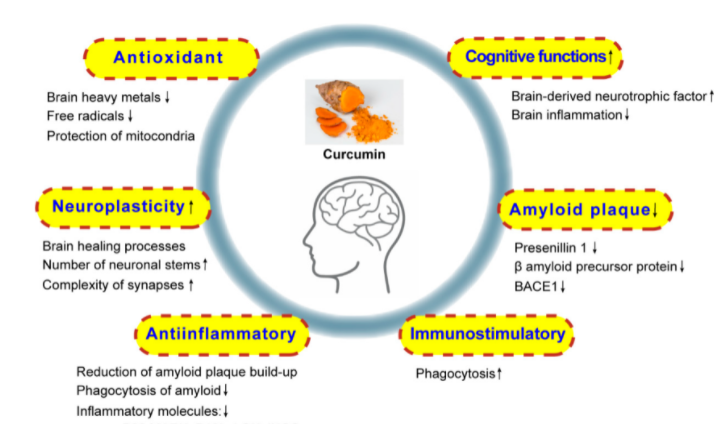|
Sinoway Industrial Co. Ltd
|
Product name
|
Organic Turmeric Root Extract / Curcumin
|
Active Ingredient
|
Curcumin
|
CAS No.
|
458-37-7
|
Molecular Formula
|
C21H20O6
|
Molecular Weight
|
368.38
|
Assay
|
95%, 98%, 99% up
|
Appearance
|
Orange-yellow crystalline powder
|
ANALYSIS
|
SPECIFICATION
|
RESULTS
|
Appearance
|
Yellow Powder
|
Complies
|
Assay(Test by HPLC)
|
Total Crucuminoids≥95%
Curcumin≥80%
Demethoxy Curcumin≤15%
Bis-demethoxy curcumin≤2%
|
95.56%
81.36%
15.24%
1.96%
|
Sieve Analysis
|
NLT 100% pass 80 mesh
|
Complies
|
Moisture (%)
|
≤2%
|
0.95%
|
Ash
|
<1%
|
0.41%
|
Heavy Metal
|
<10 ppm
|
Complies
|
Arsenic (As)
|
<0.1 ppm
|
Complies
|
Lead(Pb)
|
<0.5 ppm
|
Complies
|
Cadmium (Cd)
|
<0.05 ppm
|
Complies
|
Mercury (Hg)
|
Not Detected
|
Complies
|
Pesticide Residue
|
|
Acephate
|
<0.1 ppm
|
Complies
|
Methamidophos
|
<0.1 ppm
|
Complies
|
Parathion
|
<0.1 ppm
|
Complies
|
PCNB
|
<10 ppb
|
Complies
|
Microbiology
|
|
Total Plate Count
|
<1000 cfu/g
|
98 cfu/g
|
Yeast & Mold
|
<100 cfu/g
|
34 cfu/g
|
E.Coli
|
Negative
|
Complies
|
Salmonella
|
Negative
|
Complies
|
Conclusion
|
Conform with specification
|
Storage
|
Store in cool & dry place;Keep away from strong light and heat
|
Shelf Life
|
2 years when properly stored
|
What is Curcumin?
Turmeric powder is a bright yellow powder made by dry grinding of mature turmeric rhizomes (underground stems). The use of turmeric for coloring and flavoring food, for cosmetic purposes and for medicinal properties dates back to the ancient Vedic culture of India. Used in almost all Indian curries, this spice has almost no calories (1 tablespoon = 24 calories) and zero cholesterol. It is rich in dietary fiber, iron, potassium, magnesium and vitamin B6. Nowadays curcumin salts are also available, which are water soluble and thus increase the range of products in which curcumin can be used.
With the deepening of research on curcumin, it has been found that it has a wide range of pharmacological activities such as anti-inflammatory, anti-oxidation, lipid-regulating, anti-viral, anti-infection, anti-tumor, anti-coagulation, anti-liver fibrosis, anti-atherosclerosis, etc. , And low toxicity, small adverse reactions. Curcumin is currently one of the world's largest-selling natural food colorings. It is a food additive approved by the World Health Organization, the U.S. Food and Drug Administration, and many countries. What attracts researchers is not only curcumin as a non-steroidal anti-inflammatory drug, but because of its chemopreventive properties, curcumin has a wide range of preventive properties against diseases. In view of the fact that modern medical research has found that the occurrence of many diseases in the human body is related to the formation of free radicals and the participation of inflammatory reactions, curcumin's antioxidant activity and anti-inflammatory effects have attracted widespread attention from domestic and foreign scholars.
Function of Curcumin

Application of Curcumin
1. Turmeric extract is mainly used in many foods as a coloring in cheese, beverages and cakes;
2. Bulk Curcumin Powder is used for dyspepsia, chronic anterior uveitis and Helicobacter pylori bacteria;
3. Water soluble curcumin is used as a topical analgesic, and for colic, hepatitis, ringworm and chest pain.
4. With the function of improving blood circulation and treating amenorrhea;
5. With the function of lipid-lowering, anti-inflammatory, choleretic, anti-tumor and anti-oxidation;
6. Turmeric Powder contains antioxidants, which protect cells against damage caused by free radicals |
Send Inquiry
|
|
Shandong Runxin Biotechnology Co.,Ltd
|
Shandong Runxin Biotechnology Co., Ltd is a global integrated contract manufacturer fo dietary supplement industry, providing wide range of products with different forms including softgel,tablet,capsule, granule and powder.
Runxin Biotechnology Located in Wucun Industrial Park, the Group’s production base covers a floor space of 20000 sq. meters with a total investment of 30 million yuan. Buttressed by D-level (100,000 level) GMP workshop, first-class production equipments of the State, highly productive R&D team and fully equipped testing center, the production base can ensure reliable product quality and meet customers’ requirements.We produce 80millions hard capsules,25millions soft capsules,50millions tablets, 120 tons powders, 130 tons granule per year. |
Send Inquiry
|





 Pharma Sources Insight January 2025
Pharma Sources Insight January 2025


